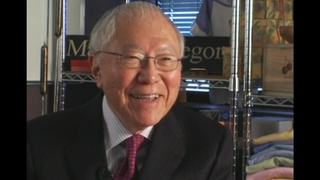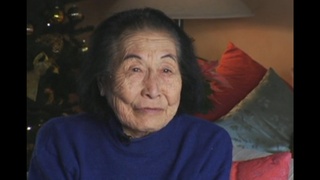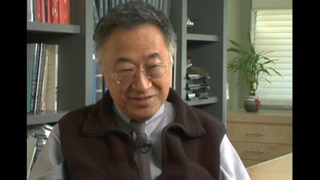Interviews
Facing housing discrimination in Rhode Island
So they gave me a list of people who would take on students for housing. So, I went knocking on all these doors they had on the list. This was in late August, before school started. As soon as I got there and tried to see if they had room...after about 5 or 6 of them, I began to realize, they all, for one reason or another, didn’t have any room. It was strange. So, I told my mother and father, “Something’s wrong here. I’m not going to go to this school.” So, I got on a Greyhound bus and came home. And I told ‘em, “I’m going to UCLA” because I was already accepted to UCLA. I had no idea what to do. So, basically, even in Rhode Island, I recall, even in New Jersey, when you went to a movie, African-Americans, or Black, were upstairs in the balcony and only whites were downstairs. Somehow, in New Jersey, I was treated as a white. So, anyway, it was a very strange kind of thing going on there. I told the Rhode Island School of Design “I’m not going there.”
Date: September 15, 2017
Location: California, US
Interviewer: Jennifer Cool
Contributed by: Jennifer Cool, Matthew Purifoy
Explore More Videos

Strict school policy of separating boys and girls in Japan
(b.1920) Japanese Canadian Nisei. Established the Ikenobo Ikebana Society of Toronto

Growing up outside of Portland’s Japanese community
(b. 1921) Nisei businessman. Established "Made in Oregon" retail stores

Undergraduate studies interrupted following Pearl Harbor
(b. 1921) Nisei businessman. Established "Made in Oregon" retail stores

Difficulty getting work during World War II
(b. 1921) Nisei businessman. Established "Made in Oregon" retail stores

Japanese musical education
(b.1943) Shin-issei grand master of taiko; founded San Francisco Taiko Dojo in 1968.

Education in a Buddhist temple and a country school
(1914-2018) Founder of the largest gladiolus bulb farm in the United States.

His experiences in Chicago after WWII
(b.1929) Pioneer medical researcher in tissue transfer and organ transplantation.


Discharged from the U.S. Army after Pearl Harbor
(b. 1918) Founder Azumano Travel


Stereotypes about Japanese: past and present (Spanish)
(b. 1937) Professional journalist

Reaction to a 1942 speech by Mike Masaoka, Japanese American Citizen League's National Secretary
(1915 - 2011) Nisei florist who resettled in New York City after WW II. Active in Japanese American civil rights movement

Father’s will to have Japanese education
(b. 1922) Canadian Nisei who was unable to return to Canada from Japan until 1952

First impression of New York City during war time
(1915 - 2011) Nisei florist who resettled in New York City after WW II. Active in Japanese American civil rights movement

Neighbors' sympathy after Pearl Harbor
(1915 - 2011) Nisei florist who resettled in New York City after WW II. Active in Japanese American civil rights movement
